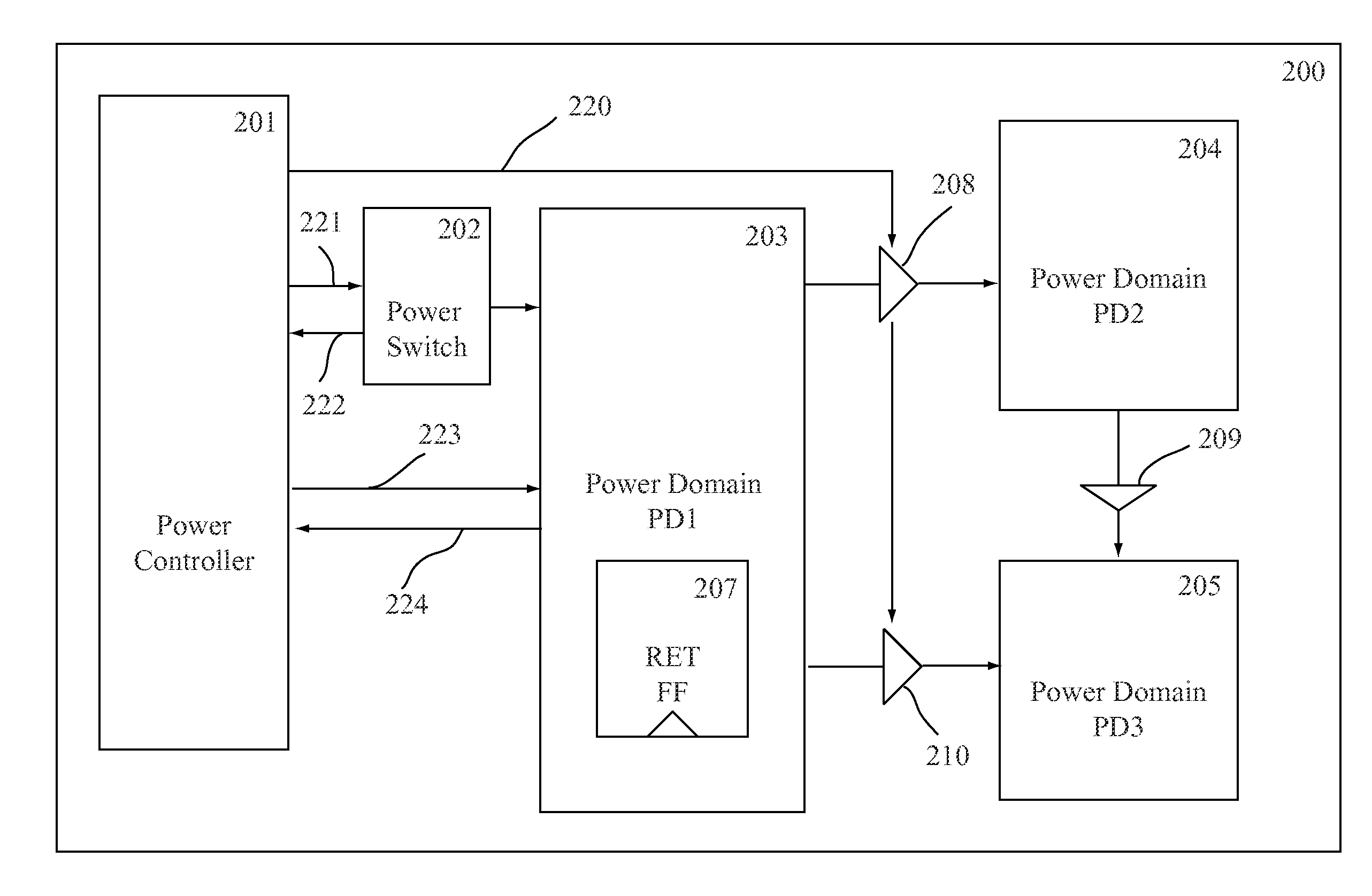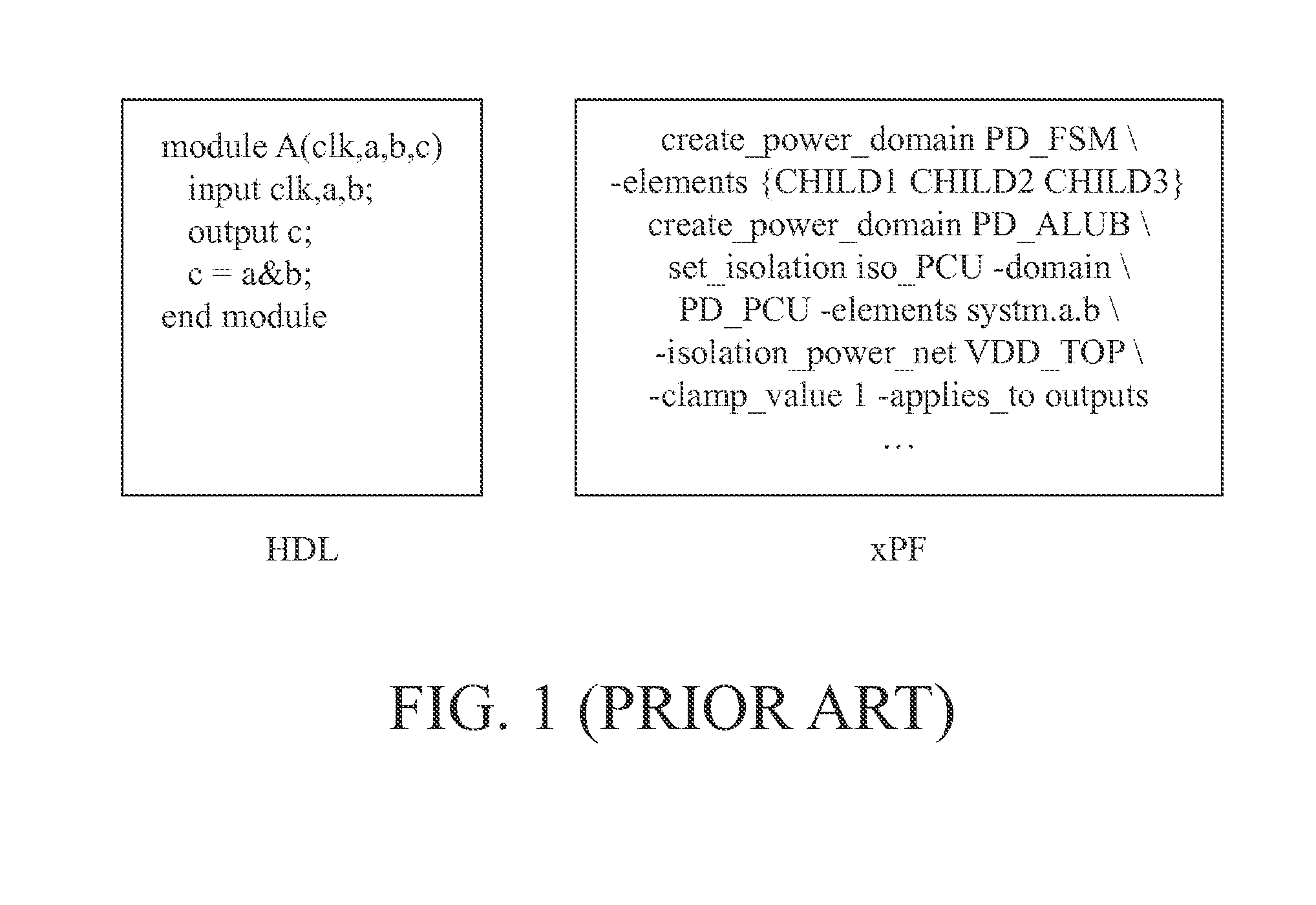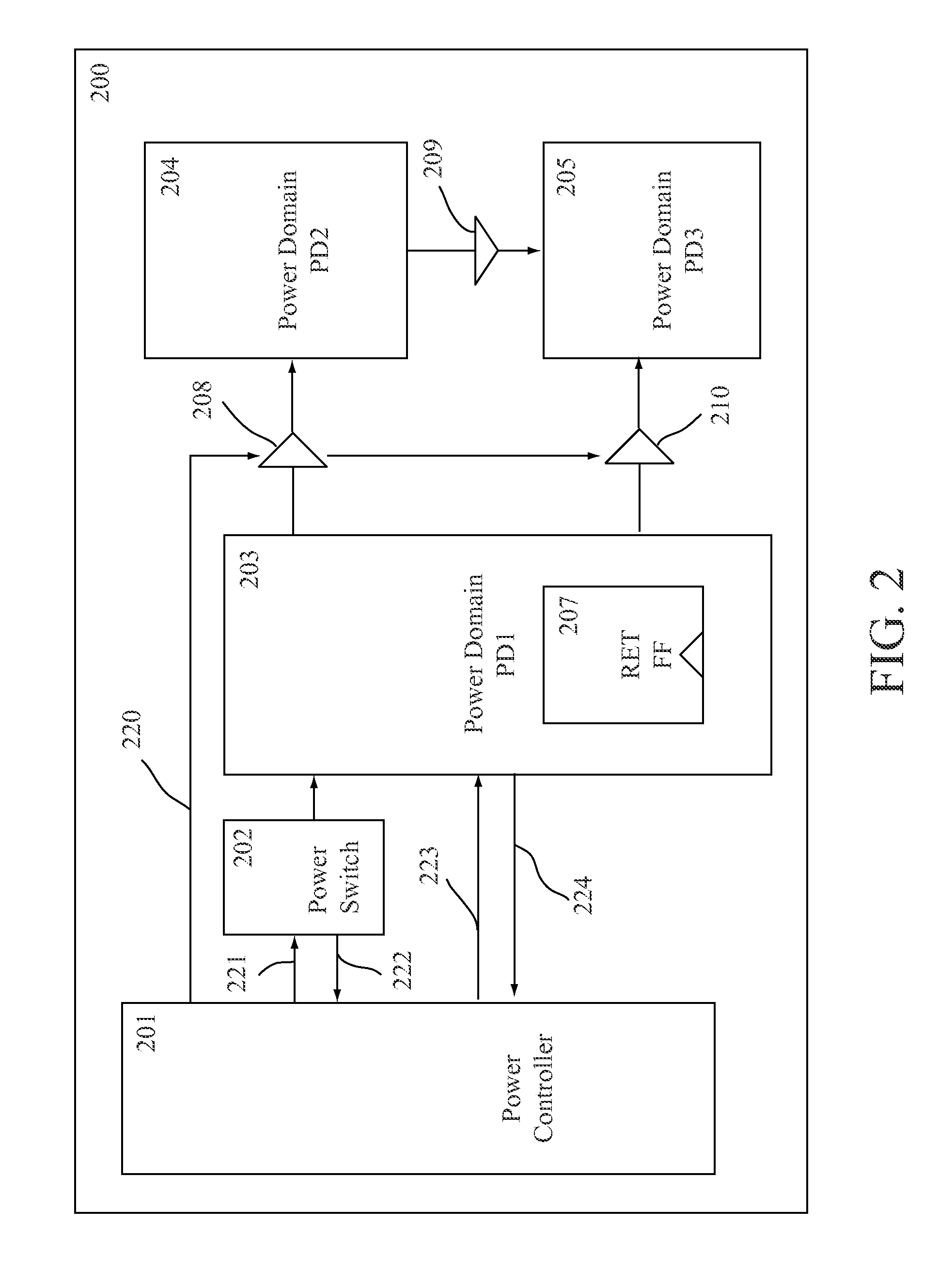Method for detecting and debugging design errors in low power IC design
a low-power ic design and error detection technology, applied in the field of low-power ic design error detection and debugging, can solve the problems of cumbersome detection and debugging of ic designers, difficult for designers to have a full picture in mind for detecting and debugging anomalies or errors between ic design and power specification, and the complexity of system-on-chip (soc) design becomes much more complex and difficult to debug
- Summary
- Abstract
- Description
- Claims
- Application Information
AI Technical Summary
Benefits of technology
Problems solved by technology
Method used
Image
Examples
Embodiment Construction
[0021]The embodiments are presented for purposes of illustrations only, they are not intended to limit the scope of the present invention. An IC design is typically performed using electronic design automation (EDA) tools running on a computing apparatus (computer, server). A designer captures an IC design using schematic editor or describes the IC design using a high-level description language. A low power IC design is generally partitioned into many parts according to their functions and speed requirements. A netlist can be created to define the parts and specifies how the parts are interconnected. The netlist can be used for simulation and implementation of the design. A power specification can be generated to insert specific cells or blocks to guide the implementation of the low power IC design. The power specification is generated in a file separate from the IC design file. The following sections will describe a method for detecting and debugging anomalies or errors in the desi...
PUM
 Login to View More
Login to View More Abstract
Description
Claims
Application Information
 Login to View More
Login to View More - R&D
- Intellectual Property
- Life Sciences
- Materials
- Tech Scout
- Unparalleled Data Quality
- Higher Quality Content
- 60% Fewer Hallucinations
Browse by: Latest US Patents, China's latest patents, Technical Efficacy Thesaurus, Application Domain, Technology Topic, Popular Technical Reports.
© 2025 PatSnap. All rights reserved.Legal|Privacy policy|Modern Slavery Act Transparency Statement|Sitemap|About US| Contact US: help@patsnap.com



